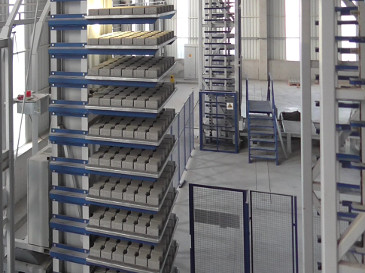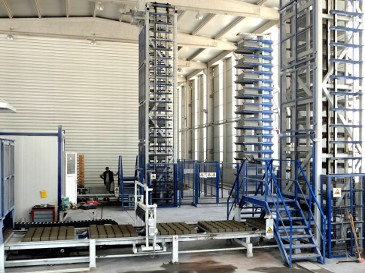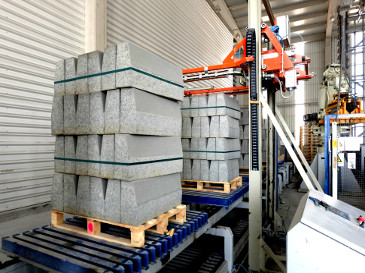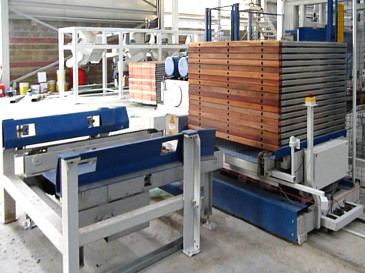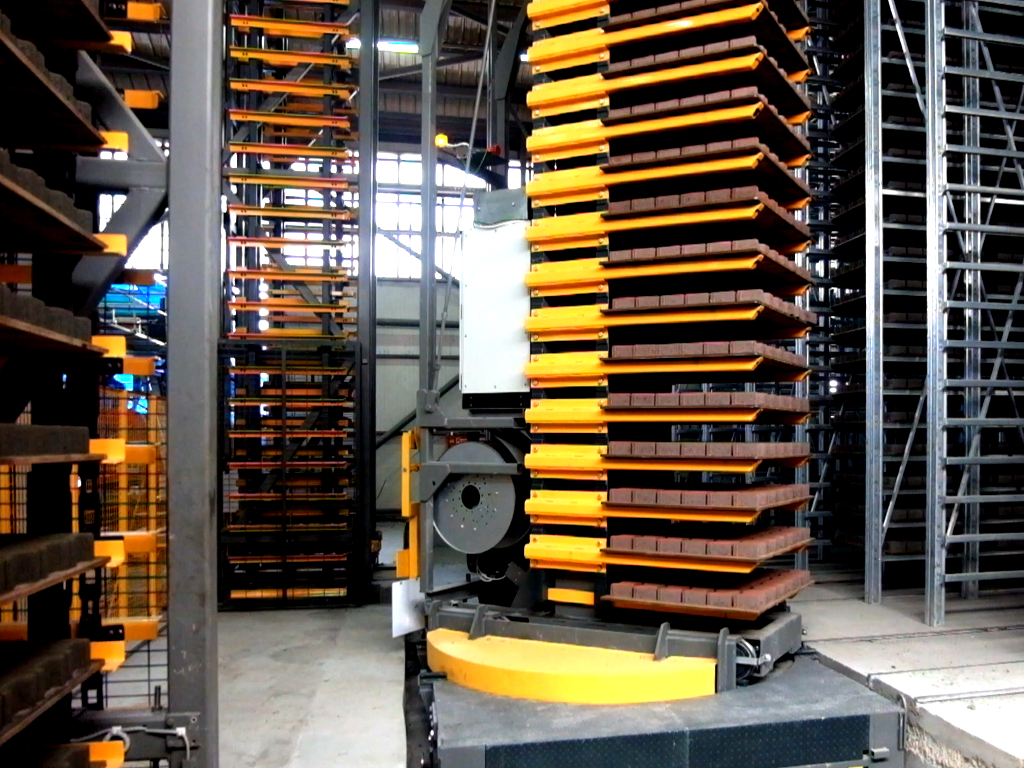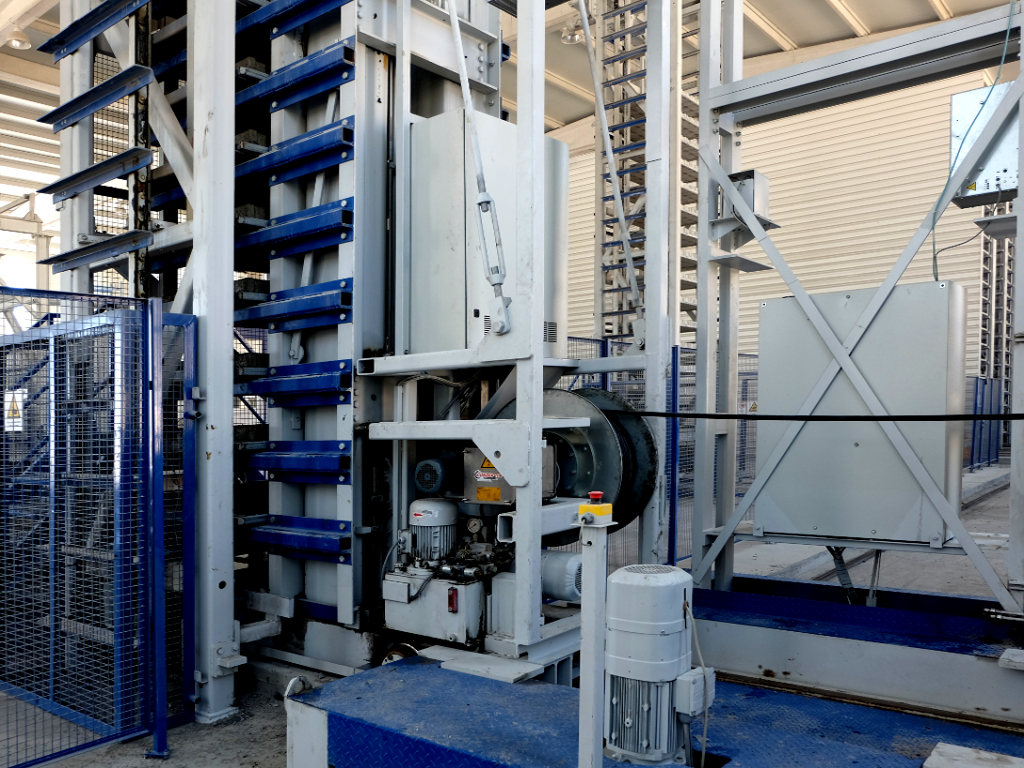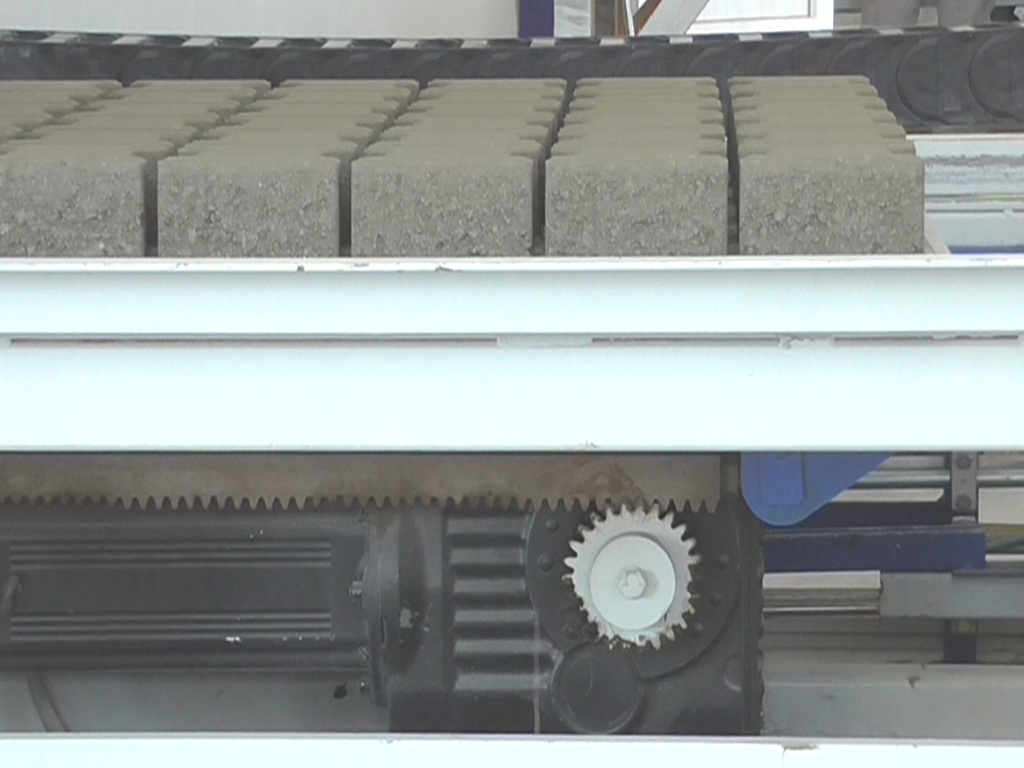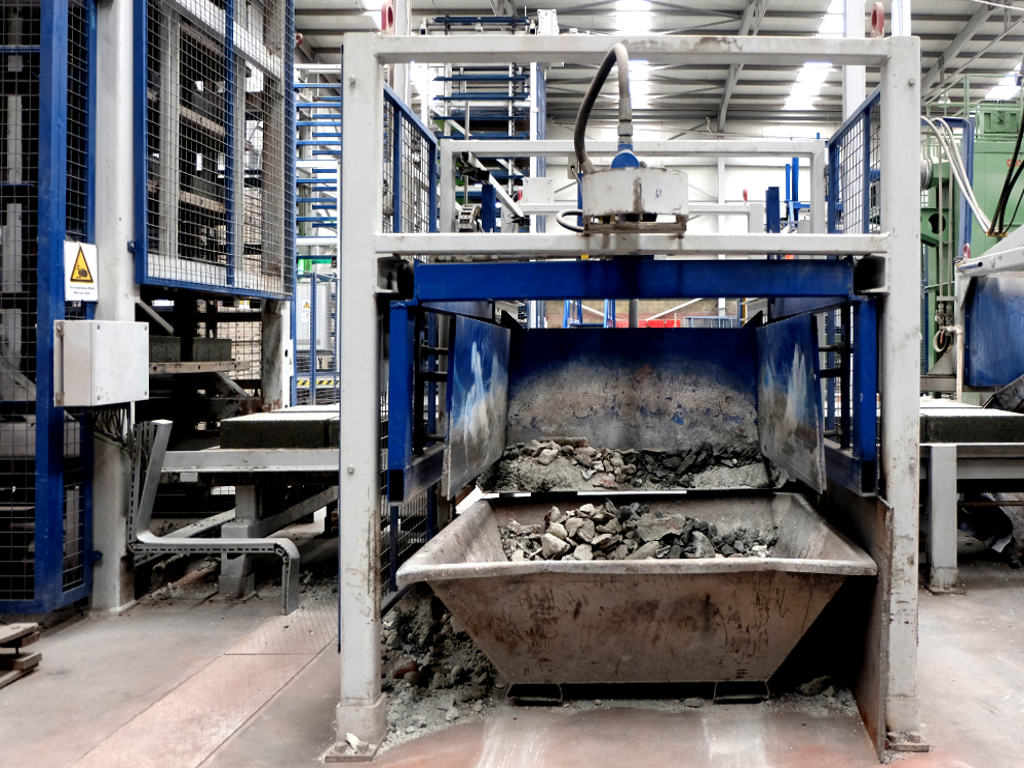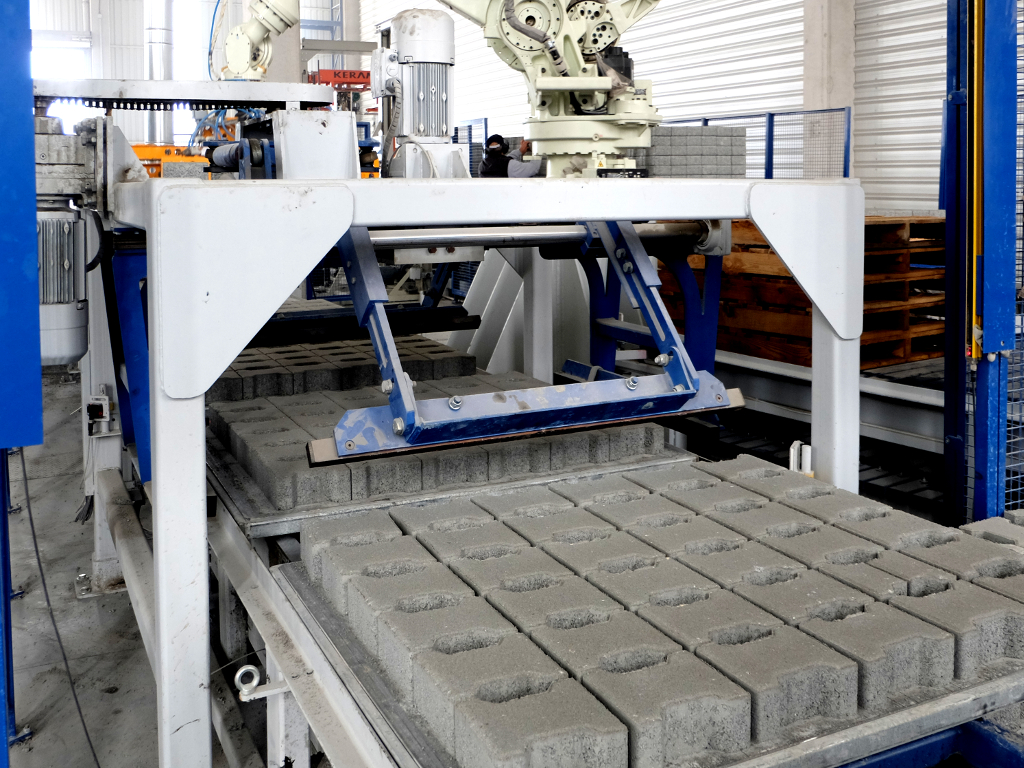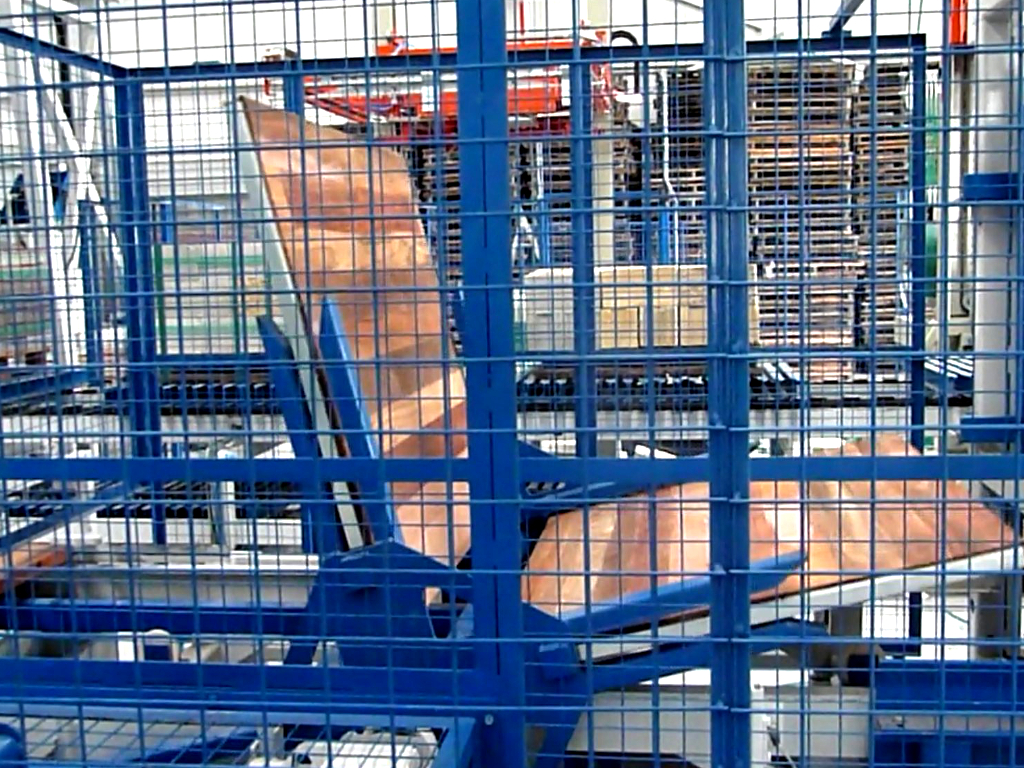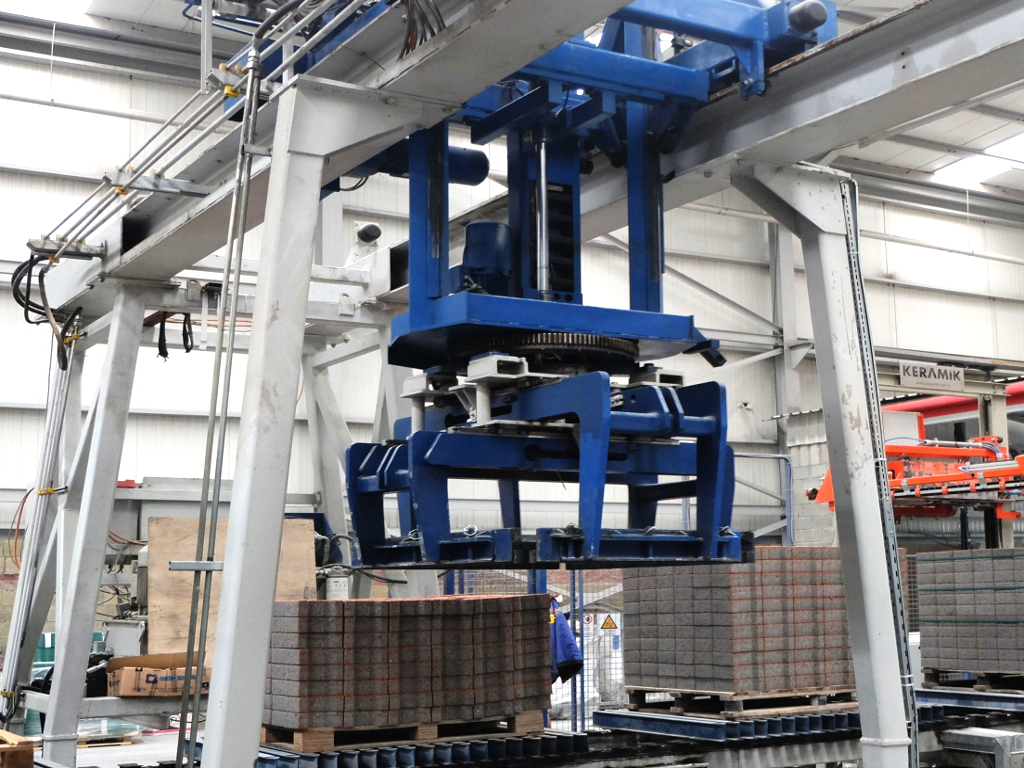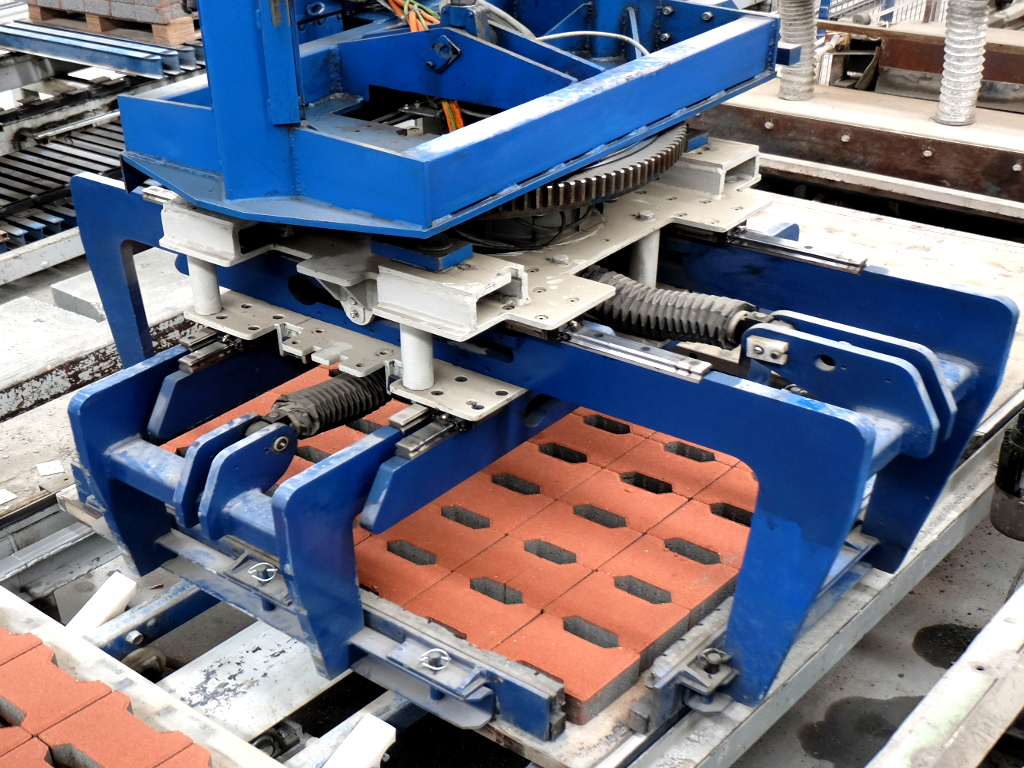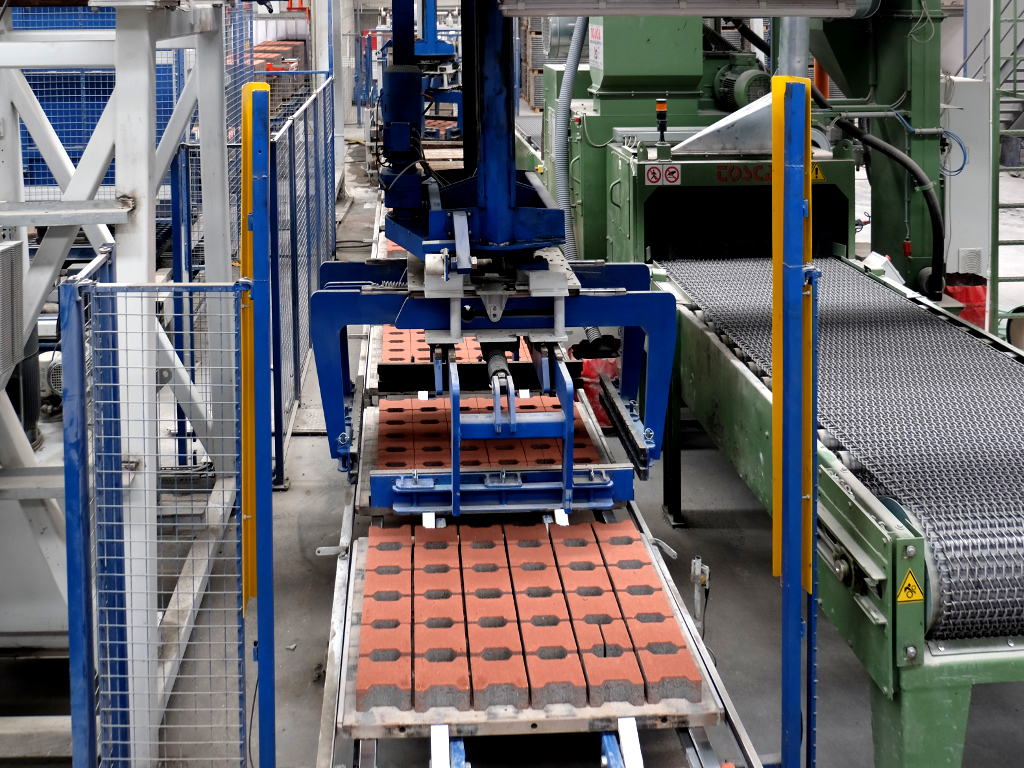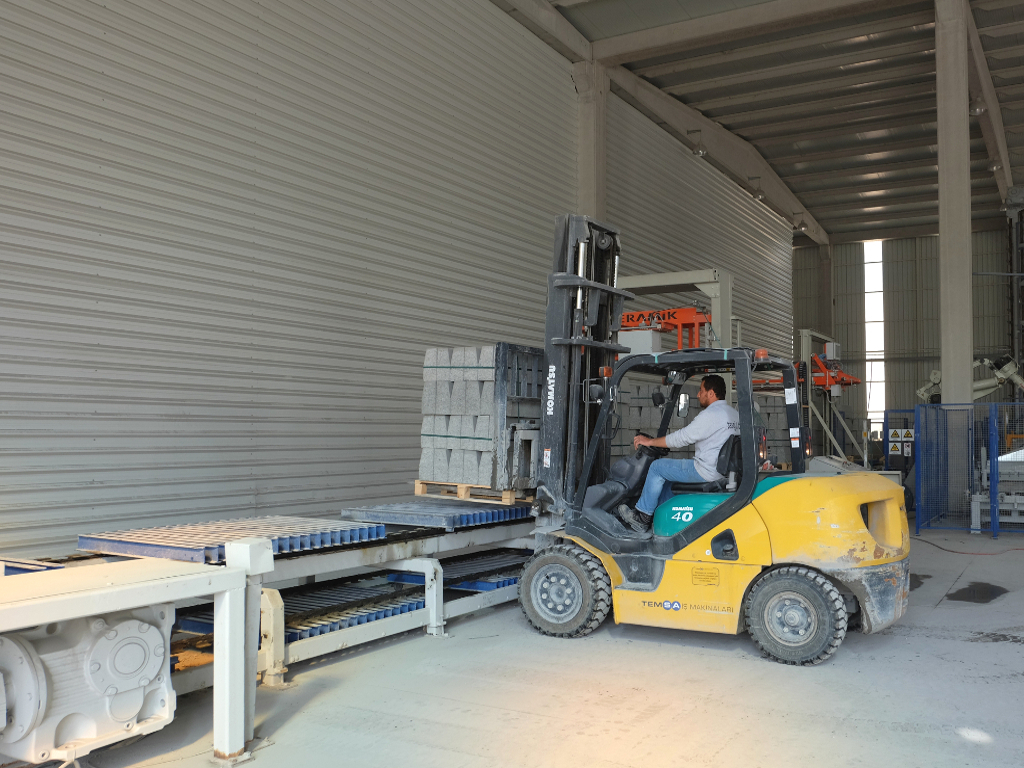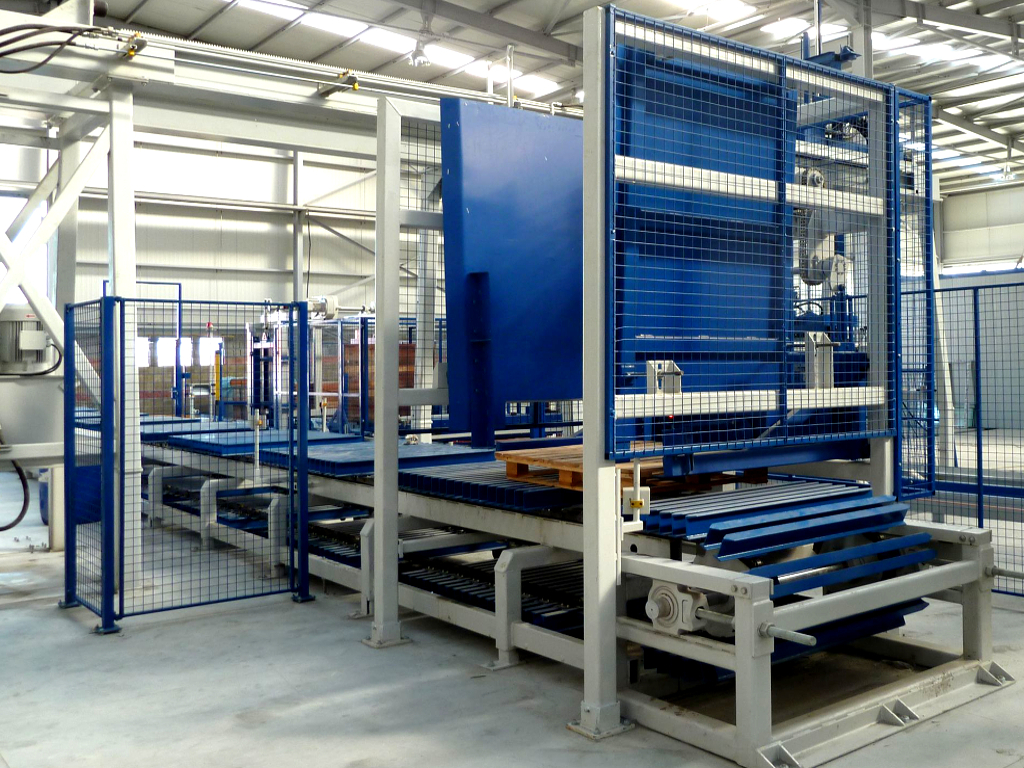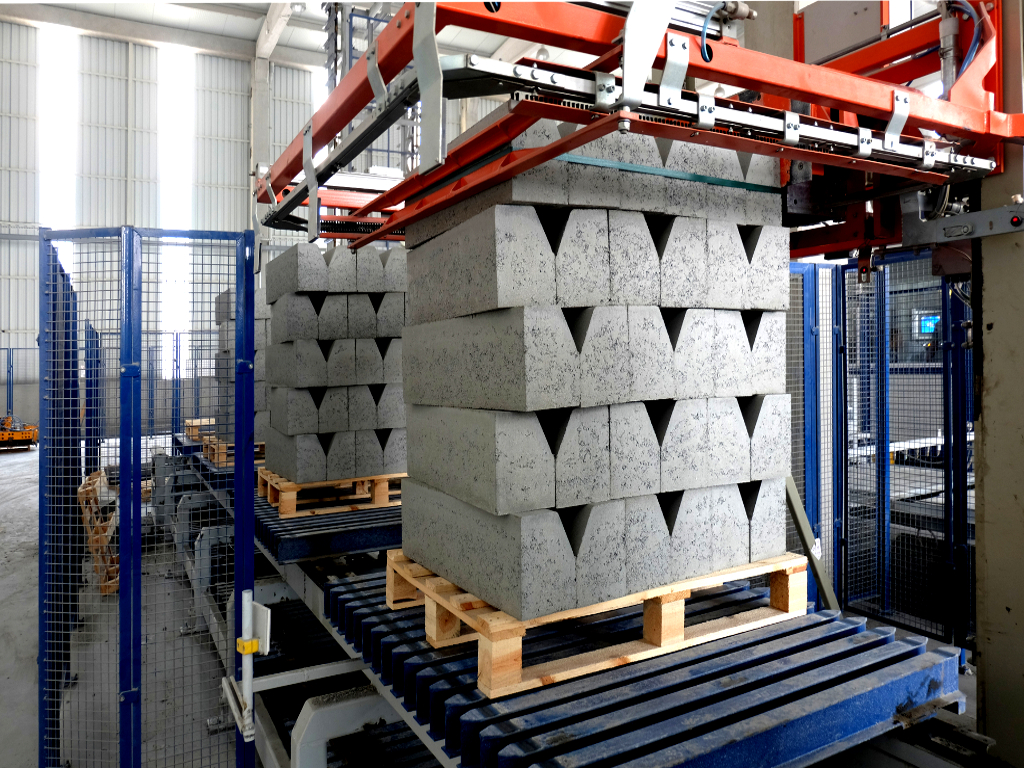Handling Equipment
Handling Equipment for Concrete Elements Factories
ARTEK designs and delivers handling equipment for concrete block and paver factories, as well as for wet-cast and concrete slab plants, customized to the needs of the customers. Our equipment is used in new plants as well as in existing plants, which can be upgraded with our products to the newest technology and increased efficiency. To illustrate our scope of handling equipment, we have structured this page following the flow of the production pallets inside a modern concrete block factory.
Pallet transportation systems
Wet & Dry Side Components
Product Cubing
Like the main machine on the wet side, the cubing equipment determines the speed and continuity of the production process of the whole factory on the dry side. ARTEK offers two general possibilities to establish a fast and reliable cubing process: cubing based on the usage of industrial robots, see the special section of this homepage (Link).
The more traditional solution is based on the usage of portal crane styled cubing stations, with attached clamping tools. This equipment is described in this section.
Cubing Video Clip
Product Cube Transport
Empty Pallet Handling
There are two basic design principles for equipment, to transport the pallets after being cleared from the cured end products back to the production machine.
The more cheap one consists of an assembly of conveyors and other equipment which transport the pallets without or with small buffers from the end of the dry line to the pallet insertion device on the machine side. These systems work in the same pulse than the rest of the equipment, they form a direct connection between the both lines. The consequence: if one line stops, the other line also stops with a short delay.
Buffered empty pallet return systems cause a higher financial investment at the beginning of the project, but this is paid back with the increased efficieny of the plant, as the lines can work indepent from each other for a much longer time than in layouts with direct pallet return systems. Buffered systems are especially efficient, if after-treatment-systems are integrated to the dry side, for example shotblasting lines.
ARTEK can design and deliver each kind of pallet return system and different methodes for buidling the pallet buffers and handling them, the following pictures are only examples from realised projects.
Unbuffered Pallet Return
Buffered Pallet Return
More Components
Washing Stations
Washing is the “entry level” value adding process, mainly used in paver plants. The washing devide – which can consist of one, two or even three stations, are installed in the area of the wet side conveyor. No further line is needed, no second cubing station. Beside the value adding effect of the washing process itself, it is a good preparation of advanced methods like shot blasting, as the mix design of the hard face mix and the production process inside the main machine are very similar.
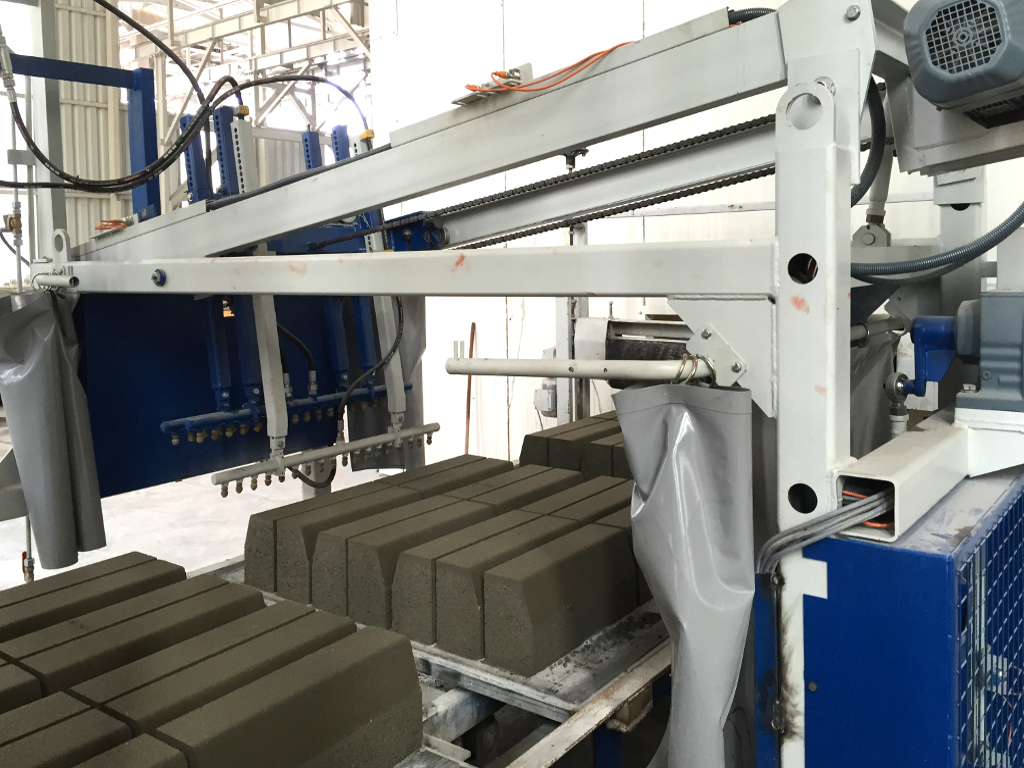
Washing – working principle
This is the process: the wet side conveyor moves the pallet with the products to be washed inside the area of the washing station. The pallet is lifted on one side, to enable the flushing process and to avoid water and residues remaining on the surfaces. The beams with the oszilating water nozzles are moved down and upwards, with adjustable speeds, sequences and water jet pressure.
The pallet is lowered again, pushed to the next station or outside of washing units and the system is ready to treat the next layer of products.
